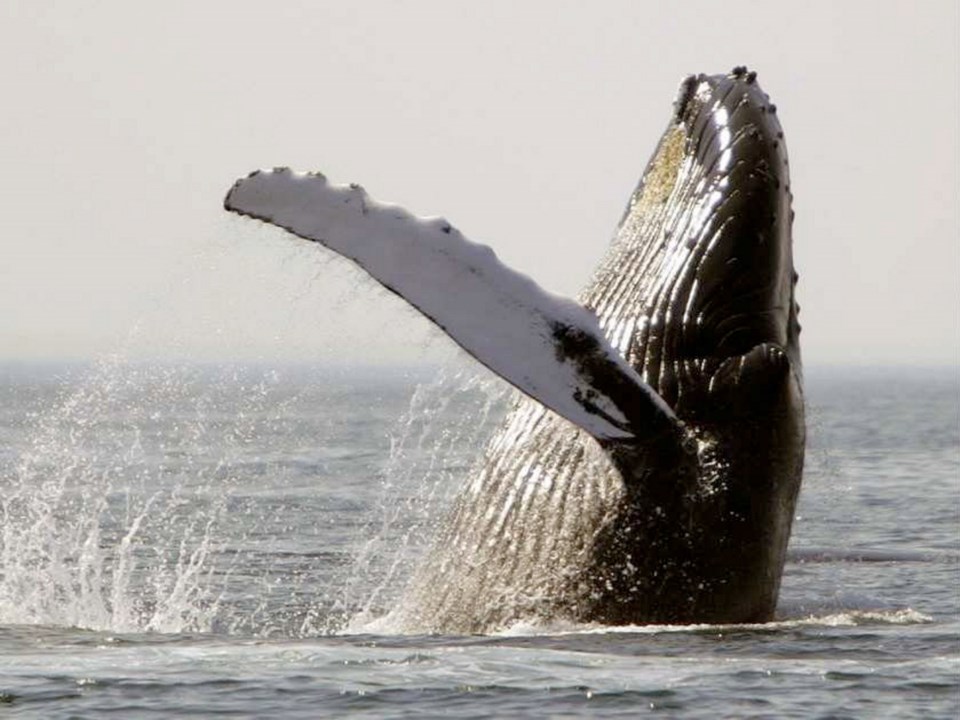The recovery of the humpback whale population in coastal waters off B.C. increases the likelihood of more collisions between whale-watching boats and these massive marine mammals, researcher Paul Spong said Thursday.
New Canadian whale-watching regulations — instead of guidelines — should be put in place to protect the whales, said Spong, co-director of OrcaLab, a whale research station on Hanson Island off northern Vancouver Island.
On Monday, a Prince of Whales Zodiac boat collided with a humpback whale off Race Rocks.
The captain and two passengers were injured when the whale suddenly surfaced, colliding with the boat which was travelling an estimated 27 knots. One passenger remains in hospital in serious condition but in good spirits, said Ben Duthie, operations manager for Prince of Whales.
“There is no investigation at this point, but there are proper due diligence practices that are standard procedure for Transport Canada and the Transport Canada Safety Board. We will be complying with both,” Duthie said.
The incident will be documented. Transport Canada will visit the whale-watching operation to rule out the possibility of non-compliance. The injured passengers will be interviewed, he said.
The Pacific Whale Watch Association, which represents commercial whale-watch operators, will use the incident as a learning tool to make sure it is doing what it can to limit the risk of this happening again, Duthie said.
Last summer, the Pacific Whale Watch Association, which represents three dozen or so whale-watching companies in B.C. and Washington state, reported that humpbacks have made a major comeback to an estimated 21,000 whales in the Pacific Northwest compared with just 1,600 when the whaling industry, which included Vancouver Island, was closed in the mid-1960s.
Spong called the collision “rare” and “very unfortunate.”
“I feel part of the problem is that humpbacks, when they are feeding, are quite unpredictable in their path of travel. They can turn very quickly and they can go down for significant periods of time. Incidents like this are probably a reflection of the way humpbacks conduct themselves, moving about.”
Humpbacks don’t use echolocation, the way orcas do, to hunt, Spong said. Echolocation is the use of sound waves and echoes to determine where objects are in space and is also used by bats to navigate and find food in the dark.
“A lot of what they [humpbacks] do is acoustic. I’m pretty sure the whale was aware of the approaching boat, but it might not have paid much attention to it. If a whale is actively involved in feeding, all its concentration is on that and not what’s happening peripherally.”
Spong is hoping Fisheries and Oceans Canada will bring in whale-watching regulations governing boat speed on approach and departure, time on site and the number of vessels permitted in an area. Canadian guidelines that restrict boat operators from being no closer than 100 metres from whales have helped, Spong said. “But I don’t think they’ve helped enough.”
In the U.S., boat operators must stay 183 metres away from the whales.
“I think that’s a very simple thing that could be put in place in terms of regulations in Canada,” Spong said. “It would protect the whales by making the situation they are in a lot calmer.
“They are out there feeding and foraging and socializing, with vessels operating at high speed around them. There’s a huge amount of noise going into the water, which obscures their ability to find fish and that has a huge impact on them.”
It’s important not just for vessels to have a lookout, but to go slow, Spong said.
The Marine Education Research Society has put up posters — “See A Blow? Go Slow!” — in areas where humpbacks are likely to surface in, he said.
Whale-watching boats are equipped with VHF radio and cellphones. They do not have equipment, like fishing boats, to track the underwater movements of marine species, Duthie said.
Local operators are already making changes to how they communicate, broadcasting the location of whales to the whole whale-watching fleet.
The U.S.’s federal regulation requiring boaters to stay 183 metres away from whales would not have prevented Monday’s incident, Duthie said, pointing out that the whale had not been previously observed and typically surfaces only every eight to 12 minutes but can remain submerged for 30 minutes.



